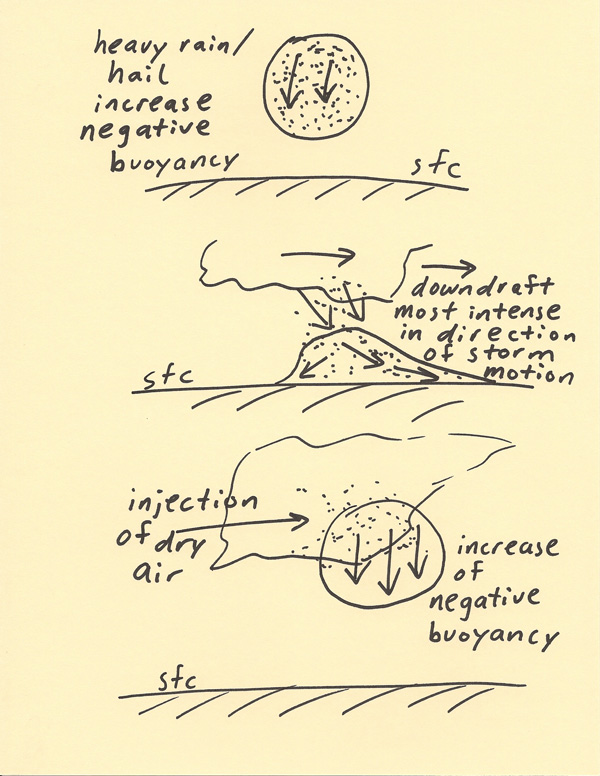
FACTORS PRODUCING SEVERE
CONVECTIVE WIND GUSTS
| |||||||||||||||||||||||||||||||||||||||||||||||||||||||||||||||||||||||||||||||||||||||||||||||||||||||||||||||||||||||||||||||||||||||||||||||||||||||||||||||||||||||||||||||||||||||||||||||||||||||||||||||||||||||||||||||||||||||||||||||||||||||||||||||||||||||||||||||||||||||||||||||||||||||||||||||||||||||||||||||||||||||||||||||||||||||||||||||||||||||||||||||||||||||||||||||||||||||||||||||||||||||||||||||||||||||||||||||||||||||||||||||||||||||||||||||||||||||||||||||||||||||||||||||||||||||||||||||||||||||||||||||||||||||||||||||||||||||||||||||||||||||||||||||||||||||||||||||||||||||||||||||||||||||||||||||||||||||||||||||||||||||||
METEOROLOGIST JEFF HABY
A severe convective wind gust is wind from a thunderstorm that is 58 miles per hour or greater. The value of 58 miles per hour
is equal to about 50 knots. A wind speed with this value or greater is known to cause considerable damage including (falling
tree branches, damage to buildings and houses, etc.). There is an exponential relationship between wind speed and damage, thus
as the wind speed increases above 58 miles per hour, the damage produced increases at an increasing rate.
There are several factors that determine the wind gusts experienced at the surface. Several of the important ones include storm
strength, forward motion of storm, and negative buoyancy of air within the downdraft. Stronger storms tend to have stronger
downdrafts. The momentum of the downdraft is helped by heavy rain/hail (first diagram below). When the downdraft hits the
surface, it will spread in all directions. The fastest winds will occur where the storm motion is in the same direction the
downdraft is hitting the surface (second diagram below shows a downdraft splashing on the surface with the most intense wind in
the same direction as storm motion). Thus as a storm approaches, often the most intense convective wind gusts will occur
as the storm first hits. One of the most critical factors in producing strong convective wind gusts is the injection of
dry air into the downdraft (third diagram below). When dry air is injected into saturated air with rain, intense evaporative
cooling takes place. This makes the downdraft of air colder and denser and thus this increases the acceleration rate the
downdraft experiences toward the surface. Even ordinary thunderstorms can produce severe convective winds if the downdraft
is able to inject dry air into it.

|
|
|

